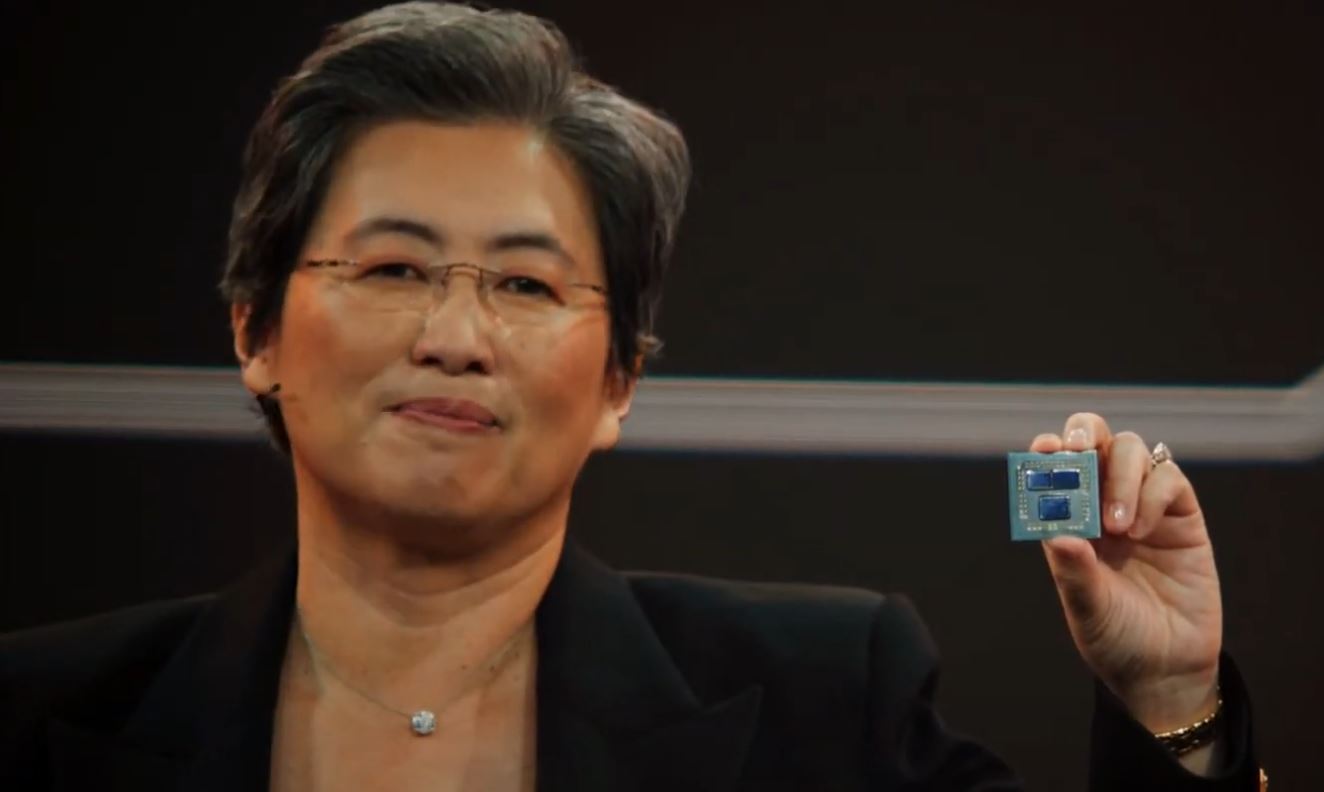AMD just changed the game entirely. AMD made a stunning disclosure at Computex 2021 — the company has 3D-stacked chiplets based on the Zen 3 architecture that will go into production this year. These innovative new chiplets feature an additional 64MB of 7nm SRAM cache (called 3D V-Cache) stacked vertically atop the core complex die (CCD) to triple the amount of L3 cache for the CPU cores. That technique can yield up to an amazing 192MB of L3 cache per Ryzen chip — a massive improvement over the current limit of 64MB.
AMD CEO Lisa Su also showed a prototype Ryzen 9 5900X chip that the company already has up and running and provided a pretty impressive demo of accelerated gameplay due to the new architecture — the gains in 1080p gaming averaged in the 15% range. That’s the type of gains that we typically associate with a new CPU microarchitecture and/or process node, but AMD accomplished this feat with the same 7nm node and Zen 3 architecture that already ships with its standard Ryzen 5000 models.
Image 1 of 4
Image 2 of 4
Image 3 of 4
Image 4 of 4
AMD bonds the 3D cache to the top of the Ryzen CCD with TSVs (through silicon vias) that enable up to 2 TB/s of bandwidth between the chip and the cache. This technique comes courtesy of TSMC’s 3DFabric technology, which we covered here.
AMD also thins the 3D cache die and adds structural silicon to the chip, resulting in a final Ryzen processor that looks identical to a regular chip.
Su showed a prototype Ryzen 9 5900X with the 3D chiplet technology already infused. You can see the 6 x 6mm hybrid SRAM bonded to the top of the chiplet (left chiplet in the image above). Finished devices will have 96MB of cache per CCD, for a total of an almost insane 192MB of L3 cache for a 12- or 16-core Ryzen 5000 processor.
AMD used a hybrid bond approach with TSVs that provides over 200X the interconnect density of 2D chiplets, a 15X improvement in interconnect density over micro-bump 3D implementations, and a 3X improvement in interconnect energy efficiency.
Su said these incredible advances come courtesy of a microbump-less die-to-die interface that uses a direct copper-to-copper bond to improve thermals, density, and interconnect pitch, along with yielding incredible energy advances. Su said this combination of attributes makes this approach the most efficient 3D interconnect tech in the world.
Su demoed the Ryzen 9 5900X prototype with the new 3D V-Cache against a standard 5900X, with both chips locked at a 4.0 GHz clock speed. The 3D prototype provided a 12% increase in the triple-A title Gears 5.
To drive the point home, Su showed a broader selection of game benchmarks that show the Ryzen 9 5900X with 3D V-Cache technology providing an average of 15% more performance across a broad spate of games at 1080p. That includes titles like Dota 2, Monster Hunter World, League of Legends, and Fortnite.
We have a million questions, such as if the cache has a higher latency than the ‘normal’ L3 cache, which might require software optimizations to accommodate. We’ll be busy following up with AMD for more detail, and better images.
Su said that the company will be ready to start production with its “highest-end products” with 3D chiplets at the end of the year. This is just the first implementation of the stacking tech — AMD can use it for other functions in the future, too. The implications of that on both the client and the enterprise side are quite profound, so we’ll be following up for more detail. Stay tuned.
